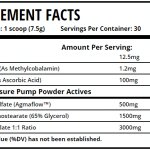AM and FM, Possibly the two most used terms in radio frequency, they even sound constantly in everyday life, we can find them in our cell phone, our car radio or simply the radio in our home, are two terms that break the radio frequency in Two, but why? What are the differences between frequency and modulated amplitude ? Are some of the questions that arise when dealing with this topic.
Frequency Modulation FM
It is a technique of transmission of information that gives us the possibility to transmit information through a carrier wave modulated by frequency. Using this type of transmission has its advantages, in which the high fidelity and quality of the information sent is highlighted, this was achieved thanks to the space, the bandwidth of the FM is in the order of 200Khz which means That between one station and the other there is a distance of 100Khz between one end and the other.
By having such a large bandwidth, it gives us the possibility to send a lot of information through it, thanks to that we can transmit great music, audio of voices of clear sounds etc etc.
Amplitude Modulation AM
It is the oldest technique in radio transmission, it is the predecessor to FM, this technique works by varying the amplitude of the signal it transmits in relation to the information it sends, The main advantage of this technique is that its demodulation is very simple , But the main disadvantage is the poor quality of the audio being transmitted, since the bandwidth is much smaller than in the FM (of the order of 2K) the information that can be transmitted is very little, and that shows In audio quality.
Here are some of the main differences between frequency and modulated amplitude .
Table of Contents
ADVANTAGES AND DISADVANTAGES OF Frequency Modulation (FM)
ADVANTAGE
- Greater immunity to noise
Deliver higher quality audio
Assembling an FM transmitter station is much more economical, it is a great advantage when it comes to thinking about transmission costs
FM transmitters do not need large antennas to operate, unlike those of AM that if they need it and if possible in terrain of wide visibility
DISADVANTAGES
- It is not useful for mountainous terrain, in countries where this geography is common AM stations are usually used to correct that problem
The transmitted signal is much more complex, which makes the demodulation as well.
ADVANTAGES AND DISADVANTAGES OF MODULATED AMPLITUDE (AM)
ADVANTAGE
- It is more efficient the transmission at low frequencies, this is much used for local transmissions, that is to say of an airplane to the control tower, or of a device to another that is at a relatively close distance
An AM station is much more useful than an FM transmitter in areas of mountainous terrain, given the size of the wave and the form of propagation that it has.
The demodulation is quite simple.
DISADVANTAGES
- The main disadvantage is the audio quality, it is very poor compared to FM
High installation cost of transmitting antennas
CONCLUSION
The two techniques of AM and FM transmission are appropriate or not depending on what you want to implement or the cost that we are willing to assume, if we are not willing to lose some audio quality, we will need an FM but if our listeners are In mountainous areas, the most convenient will be AM.
As I said, from my point of view there is not one technique better than another, what exists is a series of demands that we are willing to assume or not and that will depend on which of the two systems we use.



